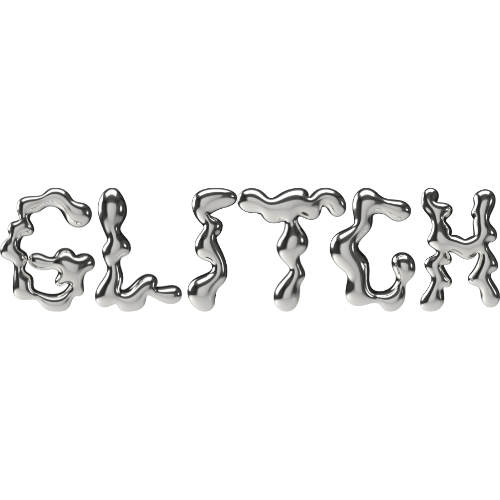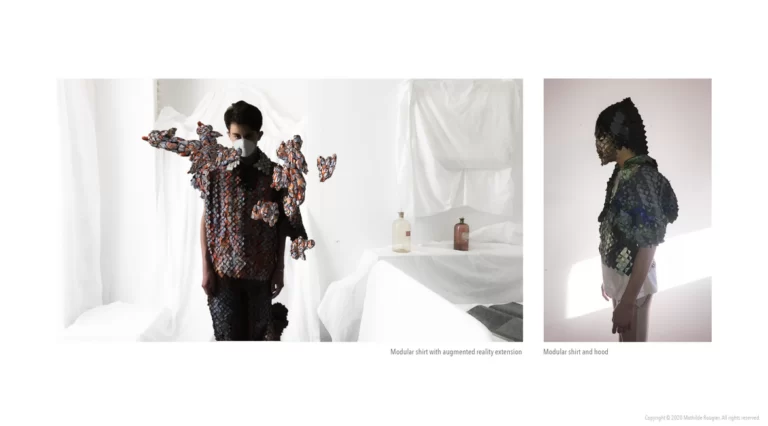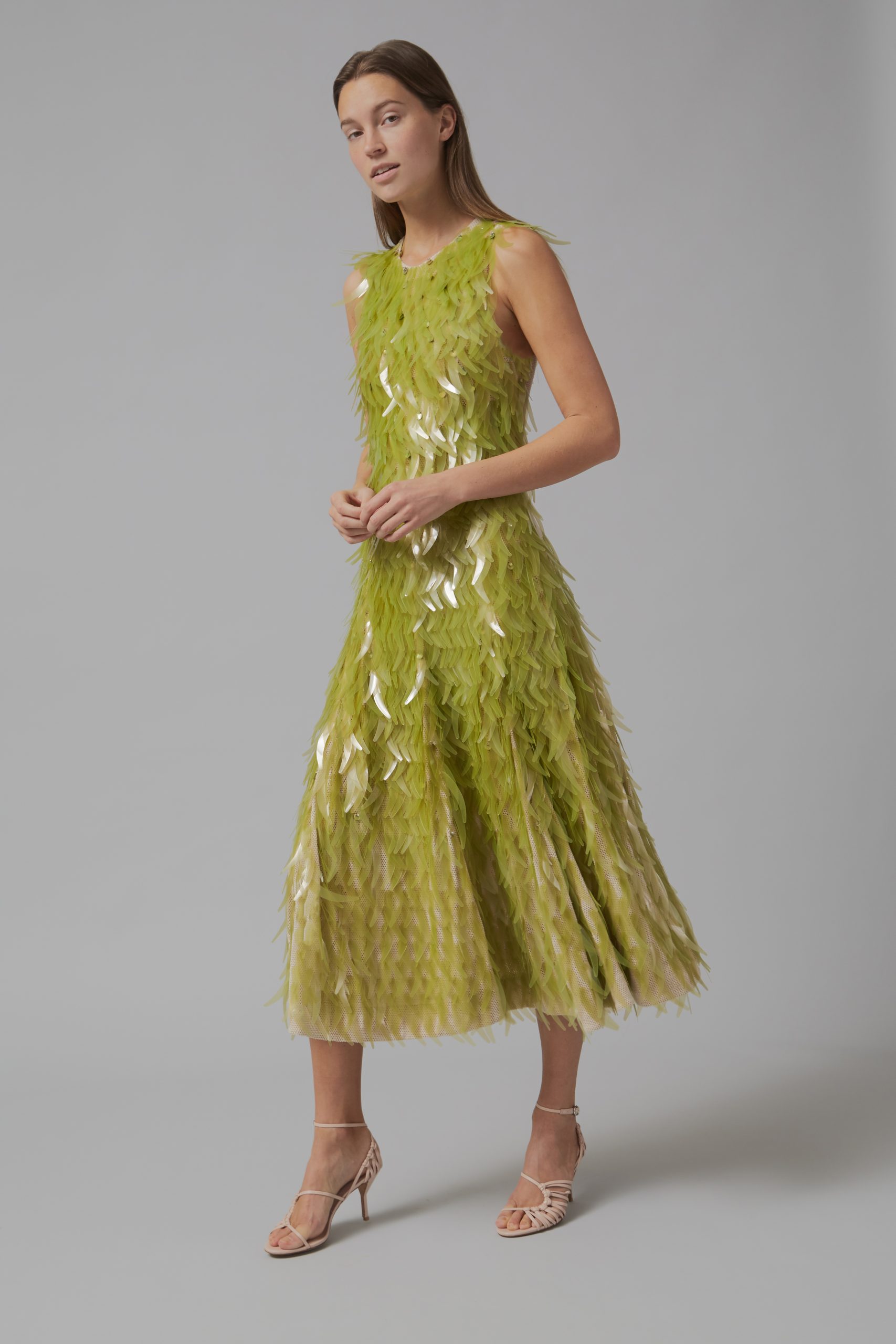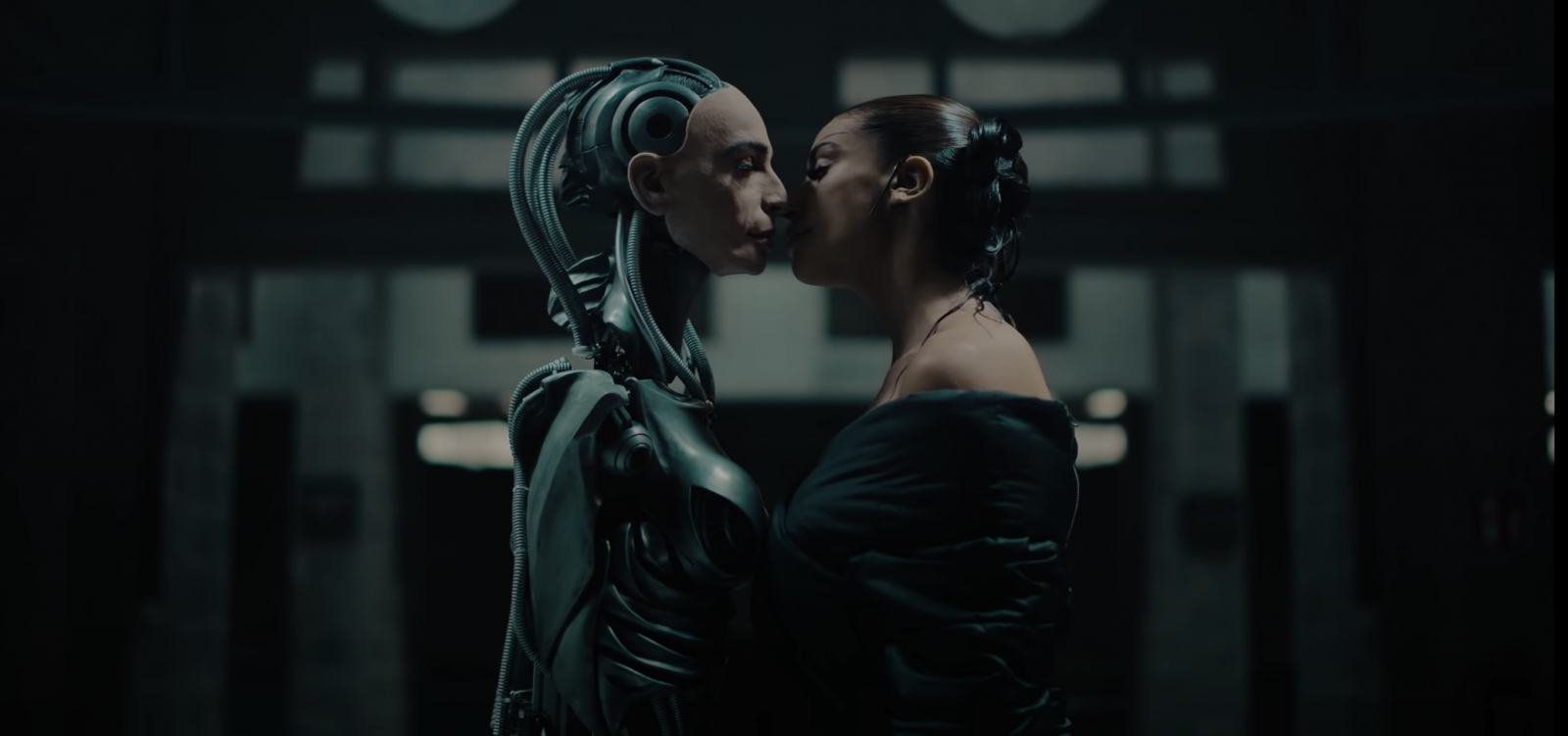Who is Mathilde ?
I’m a Fashion and Accessories Designer. I grew up in Warsaw, Istanbul, Beijing and Paris before going to Central Saint Martins in London, Class of 2020. During my degree I oriented my practice towards finding sustainable construction solutions to waste production in the fashion industry.
In this day and age, what inspired you to choose Fashion Design as your pathway? For many aspiring Designers like yourself, the Fashion Industry and what it meant to be a designer 5 - 10 years ago would have looked very different from what it is now and will be 5-10 years ahead.
When I started my degree I wanted to create art pieces that one could wear, this somehow splurged my growing concerns around sustainability. I gained interest in producing something that could actually be an alternative to the current clothes we have and how they are produced. I shifted from a fine art to a design perspective, focused on problem solving.
I’m very excited about where the industry is going.
Fashion is going to have to be sustainable. We are going to observe new ethical models, tech innovations and production systems focused on eradicating waste and producing garments that last made by people whom are paid fairly.
The other major evolution the fashion industry is going to go through is digitisation, in ten years we’re all going to have virtual accessories, AR t-shirts and watch shows in virtual reality.
How has the shift in the Industry towards a more Environmentally and Socially Conscious Industry, influenced your career aspirations?
It has pushed me towards exploring different mediums, such as AR which is my current freelance practice. I think eventually I might launch my social enterprise, so I can control the totality of the production chain. Ensure the sustainability of what I’m producing. In all honesty things are still too fresh to have a very clear vision, COVID-19 has also changed things quite heavily.
In your most recent collection, “The Modular Augmented Capsule” you incorporate both Sustainability and Technology through Up-cycled materials while also hinting at an approach of Circularity.
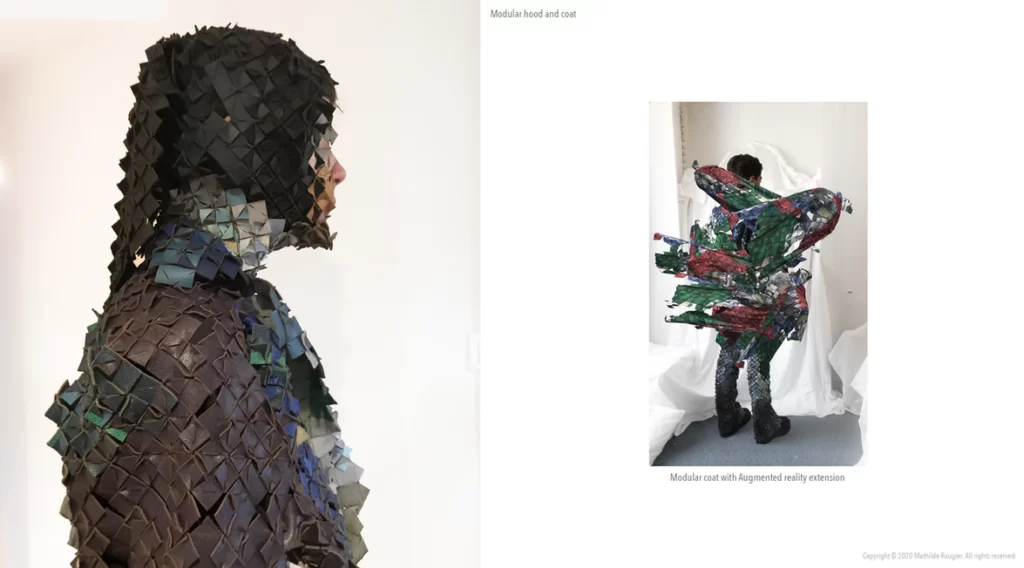
What was your Creative process in selecting which materials to use to enable its “re-usability”? and what are the benefits of construction through Tessellated Modules?
The materials used arose naturally from the observation of the waste streams produced throughout my internships.
I think when you are working sustainably you reverse your mind set, you start with material and then go on to design, you can’t design ex-nihilo.
Tessellating modules are in other terms, small bits of material that can be slotted together and their shape when cut out creates no gaps, so no waste. The benefit of that is producing as little waste as possible in the cutting process and then to allow for the assembly and disassembly of all the garment. Basically it’s like no waste Lego, you keep the blocks and rebuild something. It’s circular in that way.
Through this collection, have you made any discoveries on new materials which prolong durability, reusability that were integrated into your designs?
With the transformation that the Industry is undergoing to meet Environmental and Social Responsibility demands, we can expect increased Innovation in Garment Design and Production.
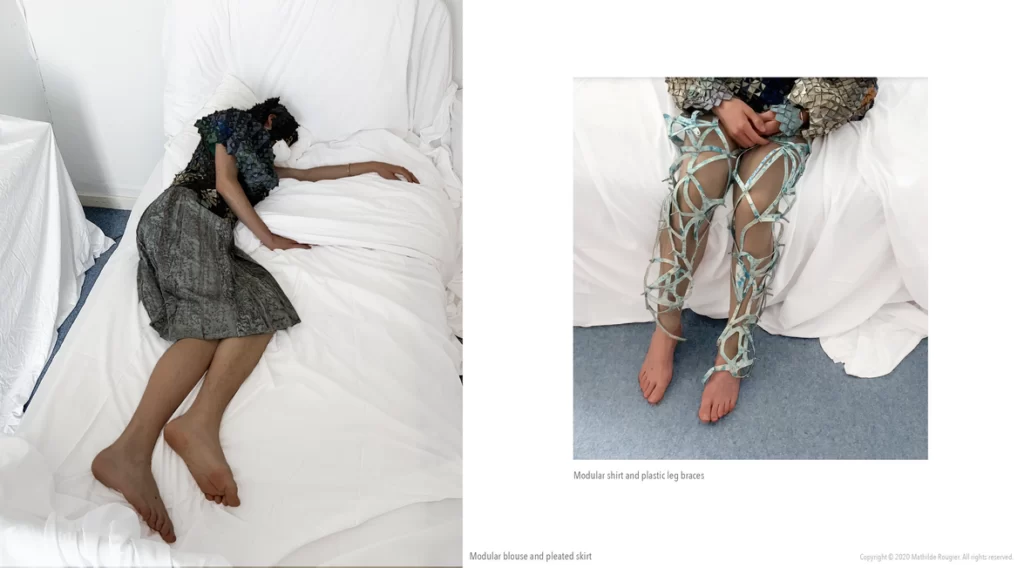
With this in mind, what are the avenues you wish to explore in your Creative Design to help you reach this new standard?
I’m looking into collaborating with someone working in AI to optimise the sorting process I’m currently using to organise the tessellating modules. For the collection I aided myself with a generic convolutional neural network, I want to push this further.
Through the implementation of Sustainable ways and Technology, how do you suggest we “rebuild a better new normal” in the Fashion Industry, post COVID-19?
I think the “easiest” strategy that can be easily and immediately done is to digitise everything such as: shows; adds; samples etc. In the long term I think we should focus on all the materials we have already produced. There is enough waste globally to create collections for decades.
What is your opinion on the concept of ‘Circular Economy’ and its impact on Designers like you?
Circular economy is the ultimate goal in my mind. Keep everything in the loop, recycling is the first step in that direction, it adds an extra step before disposal, but the goal is no disposal. In practice, designing “circularly” is quite a challenge. Thankfully there are already things around like swapping and repairing.
Which recent developments have you explored and applied that bridge Technology and Fashion?
The design process of the collection was quite heavily inspired by digital mediums in order to inspire the aesthetic and construction.
The tessellating modules are inspired by pixels, I wanted the garment to function a bit like a screen. I went through a variety of processes including the use of AI to aid the sorting process and design of the garments out of Modular Tessels. I also based the whole process on a digital archive of clothes that were given to me. The archive was manipulated through 3D scanning, data moshing and pixilation. The final bit was plane tracking the pattern on the clothes in order to augment them in AR, to extend their shape in the virtual space.
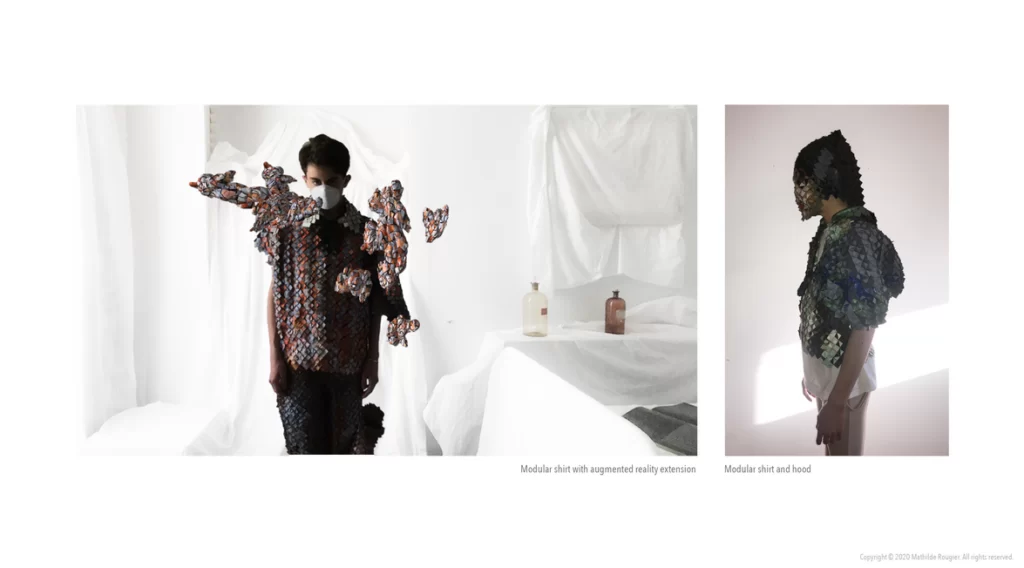
What are your views on Fashion approaching Non-Seasonal Collections? How will this affect you or benefit your Sustainable approach to Fashion?
I think it’s an essential step forward. First because on a global scale seasonality isn’t relevant, when an Autumn winter collection comes out in Paris, it’s completely irrelevant to the climate in Sydney. Second, it’s a ridiculous amount of pressure on the whole chain from design to prototyping to production. Almost no other design field functions on such a schedule.
What brands do you think are pioneering in the incorporation of new technology through Fashion?
Carlings in ready to wear is great, sustainable and making AR t-shirts, Iris Van Harpen is always super interesting in her approach to tech and otherwise the whole of Helsinky Fashion week is going digital this year! So that’s very exciting.
Do you think if Fashion fails to incorporate Sustainability it will become irrelevant in the future?
Yes. To be honest it’s not even really an option.
